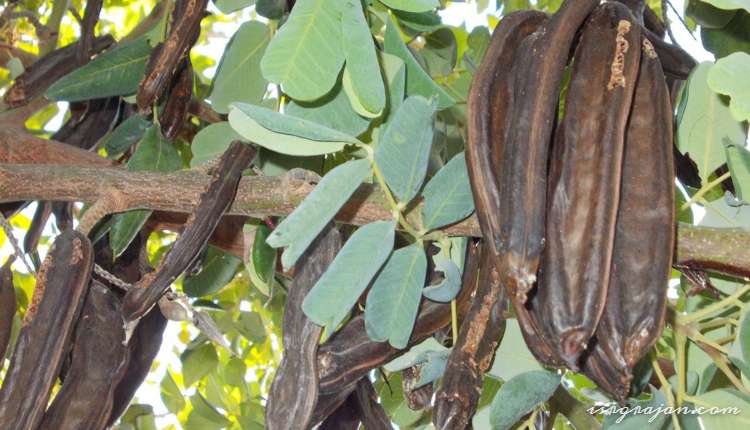Three years ago, in 2018, an article came out in Forbes magazine claiming that chocolates will be extinct by the year 2040. The story originated in an article published in the Business Insider that claimed chocolates are on their way to becoming extinct. It created quite a stir among chocolate lovers bull around the world. In this article, we will find out if chocolates are going to be extinct and the reason behind such drastic claims. We will also talk about the modern alternatives that are all coming out and whether they are good or not.
Cocoa: The Source of Chocolate
Chocolates come from Cocoa plants (mainly: Theobroma cacao). Although chocolate is loved worldwide, it can be produced in a very limited geographical region. They are sensitive plants. To be precise, cocoa plants are grown within about 20 degrees North and South of the equator, and the best results are seen only within the range of 10 degrees North and South of the equator. Cocoa plants require specific climatic conditions to grow. They need a rainforest-like condition: high temperature, high humidity, soil enriched with minerals and organic matters, protection from wind etc. Countries of North and western Africa and some countries in the South of India on the Indo Pacific Ocean like Indonesia are sole producers of chocolate. Ghana and Cote d’Ivoire produce half of the total production of chocolate every year.
Climate Change and Cocoa Production:
In 2014, during the Paris agreement, United Nations Framework Convention on Climate Change (UNFCCC) assessed that the countries in the region of North and West Africa will see a rise in temperature by 2.1 degrees Celsius by the year 2050. Cocoa plants are susceptible to climate change, and thus, the drastic change in the temperature is well beyond the limited range of temperature within which cocoa plants can survive. It is possible, if the effects of global warming cannot be reversed, we will see an irreparable reduction in the number of cocoa plants.
However, it is not only the increase in the temperature that is going to harm the cocoa plants. The lack of humidity in the region will also damage cocoa production. The chocolate-producing island nations like Malaysia and Indonesia are already witnessing higher temperatures than the previous decade. Nevertheless, their production of chocolate has not gone down significantly. The countries situated in the North of sub-Saharan Africa are already witnessing desertification. Since the increase in the temperature will not be accompanied by increased rainfall, cocoa plants will face even more complications.
Besides increasing temperature and lesser rainfall, diseases caused by pastes and fungus are another reason of concern. Some diseases have amusing names like witch’s broom and frosty pod. They are more severe than their names give off. Deep lock the cocoa fields of Central America, and they were almost completely removed from their natural habitat.
Läderach, Martinez-Valle, Schroth and N. Castro wrote a research paper with unique findings of climate change and its relation with cocoa production. They studied 294locations and discovered that only 10.5% area had shown proof of increasing suitability while the remaining 89.5% had signs of becoming less suitable in the future (by 2050).

Harvesting Cocoa | Image Courtesy thenationalnews.com
Future of Cocoa Production
Chocolate and associated products are a huge source of revenue for many companies. They are working on many innovative methods and new technologies to ensure chocolates remain in the market. A famous chocolate company called Mars that produces sneaker-type bars has started a new project with the University of California to work on new methods so that cocoa production can be continued.
1. Gene Editing (CRISPR)
It is not all gloomy, though. Modern technologies and research have come out with certain solutions. One of the easiest, vastly used, and comparatively cheaper methods are genetic engineering. It is also called gene editing. Gene editing is done by using the CRISPR method. This method allows scientists to either cut out a targeted section of the DNA or add a targeted section of DNA to modify the sequence as per the requirements. The genes of cocoa plants are modified to be able to adapt to drier climatic conditions. Cocoa plants can be more resistant to insects and pests with modified advanced genes. Mars company’s Scientists, in collaboration with the University of California, are also trying to develop a more advanced CRISPR
2. Carbuca: A Brazillian Technique
Brazil has come out with an innovative method named Carbuca. Brazilian cocoa producers have started to preserve and sometimes replace certain trees around coco fields to provide them with shades. The Shades can be beneficial in many ways for cocoa production. The trees help retain the soil moisture, prevent soil erosion and mineral draining. The leaves, fruits flowers that they shed are an excellent source of organic matter for the ground. They can reduce the effects of global warming, and the taller trees work as a shield against the blowing wind. Cabruca Helps in building natural resistance against pests and insects. Above all, it is a climate-friendly method that promotes sustainable cocoa production. Studies found that the soil is better prepared for long-term use when the technique is used.
3. Carob: An Alternative Plant

A new plant has been discovered that is a potential alternative to Cocoa. It is known as Carob. Interestingly, it is produced in the temperate region around the Mediterranean Sea, unlike Coco. Thus, the countries in Europe and the United States of America could emerge as the leading producers of Carob. It is a brown powder derived from a specific pulverized fruit of the Mediterranean Evergreen. Then it is mixed with some sugar, fat, certain vegetables to bring out the nearest colour of the chocolate and give it a proper consistency. Although, many argue that it cannot reproduce the original flavour of Cocoa.
Conclusion:
Chocolate lovers can heave a sigh of relief because governments and private companies are working very hard to save the cacao trees. Also, it has been found out that the story that came out in Business Insider was misleading. Cacao trees are not going to be extinct by 2050. Obviously, there are some concerns regarding chocolate production in the future. However, it does not necessarily suggest that the world is running out of chocolates. Cocoa is an eco-sensitive plant, and global warming poses a serious threat to it, so we should not take it lightly. We should embrace sustainable practices to save cacao trees. People have tried and are trying to find alternatives to chocolate. As of now, nobody has successfully reproduced the original flavour of Coco artificially. The Natural is the best, so we should focus on saving the natural habitat of cacao trees.


